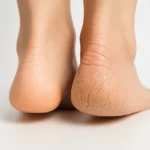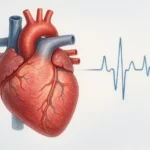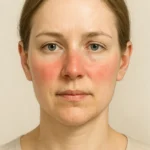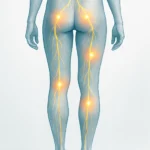
Home Remedies for Sinus Pressure and Headache: Natural Relief That Really Works
- What Sinus Pressure Really Feels Like
- Early Signs and Symptoms to Watch For
- Causes of Sinus Pressure That Don’t Always Get Talked About
- Natural Decongestants That Gently Ease Pressure
- How Sinus Headaches Differ from Migraines and Tension Headaches
- Comparing Sinus, Migraine, and Tension Headaches
- Role of Hydration, Temperature, and Breath
- Sinus Pressure and Hidden Links to Vitamin D Deficiency
- The Role of Facial Massage and Lymphatic Support
- Understanding Sinus Pressure at Night
- Sinus Pain and the Emotional Body
- Herbal Steam Therapy: Ancient and Effective
- FAQ

What Sinus Pressure Really Feels Like
When a client tells me they “just have a bad headache,” I always ask a few follow-up questions — because sinus pressure headaches have their own signature. There’s often a sense of fullness behind the eyes, tenderness along the cheekbones, and a deep ache that gets worse when you bend forward. It can feel like your entire face is under water.
This pressure comes from inflammation or blockage in the sinus cavities — those air-filled spaces behind your forehead, cheeks, and nose. When they can’t drain properly, mucus builds up, and that trapped fluid creates both pain and tension. Many people also experience eye watering, mild dizziness, or even neck stiffness.
The tricky part is that sinus headaches often overlap with migraines or tension headaches, so it’s important to listen to the full picture. In my work, I’ve found that warmth, hydration, and gentle decongestion often offer real relief — especially when combined with calming the nervous system.
Early Signs and Symptoms to Watch For
One of the most helpful things I’ve learned over the years is how to catch a sinus headache before it fully blooms. Often it begins with a sense of pressure around the nose or forehead, followed by a feeling of heaviness or fog in the head. Some people notice their voice sounds more nasal, or that food starts tasting dull. These are small cues — but they matter.
In some cases, especially with seasonal changes or after a cold, sinus tissue swells up and traps air and mucus inside. That’s when the real ache kicks in. I’ve had clients tell me their face hurts more when flying, lying down, or in cold weather. In those moments, it’s less about treating pain and more about gently encouraging drainage and circulation.
Interestingly, I’ve also found a link between sinus inflammation and dryness — particularly in people who also report eye irritation or lack of moisture in the mouth. Supporting hydration and mucosal health helps across systems.
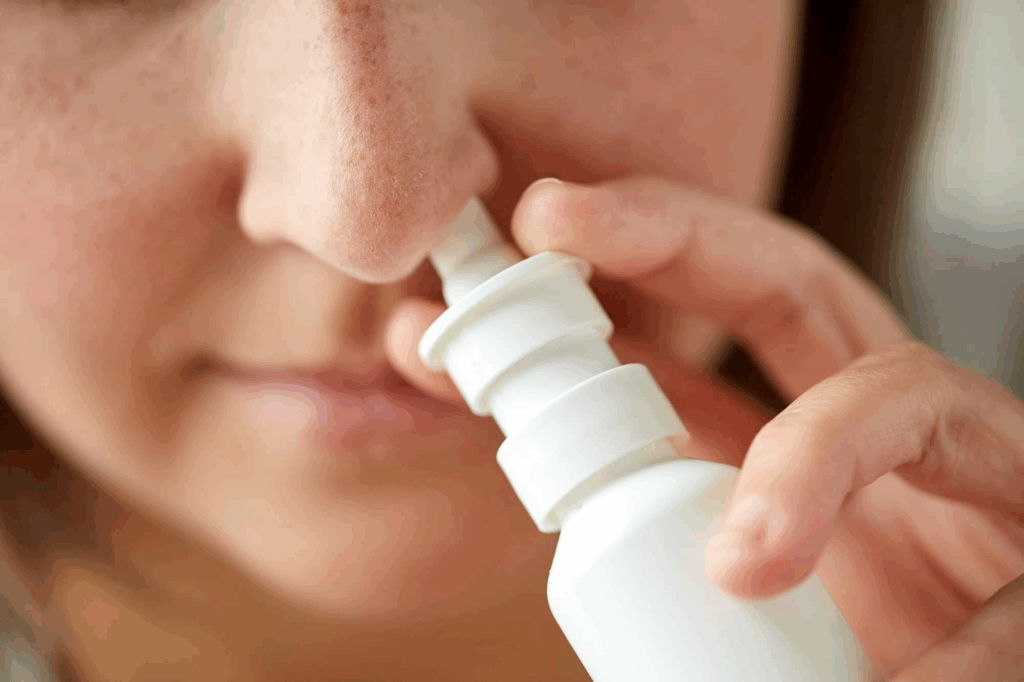
Causes of Sinus Pressure That Don’t Always Get Talked About
Everyone knows that allergies or colds can trigger sinus issues, but there are more subtle root causes that often go unnoticed. I’ve seen sinus pressure worsen with poor sleep, hormonal shifts, indoor air pollution, or even chronic mouth breathing.
For instance, I once worked with a client whose sinus headaches flared after moving into a newly renovated apartment. The culprit? VOCs and dust from new flooring. After adding air filters and saline rinses, the pressure eased within days.
Another overlooked cause is inflammation from food sensitivities — especially dairy or gluten. While not everyone is sensitive, I’ve found that removing just one irritant can reduce overall congestion. And of course, hydration matters. If you’re not drinking enough fluids, your sinus tissue can’t flush properly, making it easier for pressure to build.
Natural Decongestants That Gently Ease Pressure
When clients ask me what they can do right now — without drugs — to feel better, I often start with simple natural decongestants. Steam inhalation, for instance, remains one of the most effective tools I recommend. Adding a pinch of sea salt, a few drops of eucalyptus, or just breathing over warm water helps loosen mucus and soothe the sinuses.
Warm compresses across the bridge of the nose and forehead can also provide significant relief. I like to pair that with nasal rinses using a neti pot or saline spray — done carefully and always with sterilized water. It’s not about force. It’s about rhythm and consistency.
And don’t underestimate the power of movement. Gentle stretching or a short walk often helps sinus fluid drain more naturally by encouraging lymphatic flow. It’s not about sweating or pushing — it’s about inviting the body to open.
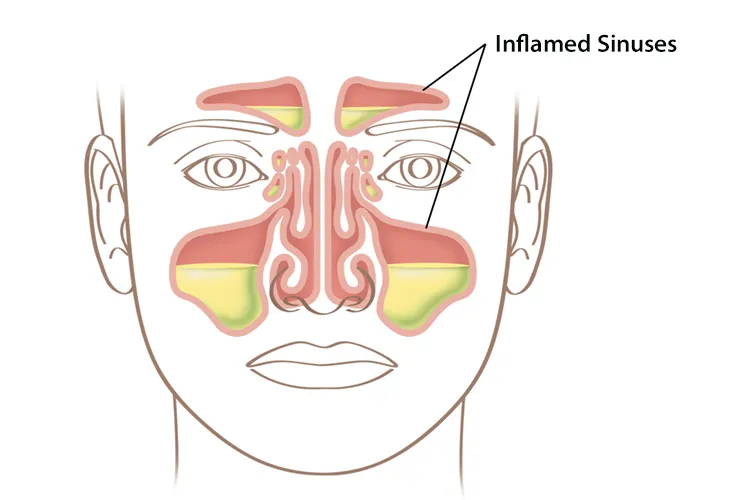
How Sinus Headaches Differ from Migraines and Tension Headaches
One of the most common mistakes I’ve seen clients make is assuming all headaches are the same — and reaching for the same treatment each time. But sinus pressure has its own rhythm, its own location, and often, its own causes. When someone describes facial tenderness, worsening pain when bending forward, or pressure around the nasal bridge, I start thinking sinus.
Migraines, on the other hand, tend to come with visual changes, nausea, and deep throbbing pain — often on one side of the head. Tension headaches feel more like a band tightening across the forehead or down the neck, and they’re usually tied to posture, stress, or eye strain.
Understanding the type of headache helps tailor the response. Sinus pain often responds best to moisture, warmth, and drainage. Migraines may require rest and darkness. Tension pain might ease with breathwork or massage. Knowing the difference is where real relief begins.
Comparing Sinus, Migraine, and Tension Headaches
| Feature | Sinus Headache | Migraine | Tension Headache |
| Location | Face, forehead, nose bridge | One side of head, behind eye or temple | Forehead, neck, both sides evenly |
| Pain Description | Dull, deep pressure | Pulsing or throbbing | Tight, squeezing, like a band |
| Triggered By | Congestion, allergies, cold | Hormones, light, skipping meals | Stress, posture, screen time |
| Associated Symptoms | Postnasal drip, nasal stuffiness | Nausea, aura, light sensitivity | Muscle tightness, fatigue |
| Improves With | Steam, heat, nasal rinse | Quiet, darkness, hydration | Stretching, massage, deep breathing |
I often refer back to this table when reviewing headache patterns with clients. It brings clarity — not just for diagnosis, but for how we support healing without overmedicating.

Role of Hydration, Temperature, and Breath
Whenever I meet someone suffering from sinus pressure, I ask about their fluid intake, indoor climate, and breathing habits. You’d be surprised how many people are dehydrated without realizing it — especially in winter or when they’ve been traveling. Dry sinuses don’t drain well. Mucus gets sticky, airways constrict, and pressure builds.
That’s why I often recommend warm fluids throughout the day, like herbal teas or broths, rather than just cold water. The warmth helps thin mucus, relax tense facial muscles, and calm the vagus nerve.
Temperature also plays a role. Too much air conditioning or dry heat can worsen symptoms. I’ve seen dramatic improvements just from adding a humidifier at night and keeping nasal passages moist with saline sprays.
And breath — perhaps the most underrated remedy of all. I guide clients through slow nasal breathing techniques that not only support sinus drainage but also reduce nervous system tension. It’s the simplest way to create space — inside and out.
Sinus Pressure and Hidden Links to Vitamin D Deficiency
Not everyone connects sinus health with nutrients, but over time, I’ve noticed a pattern. Clients with frequent sinus headaches — especially during winter — often test low in vitamin D. And when we restore their levels, pressure decreases, inflammation calms down, and congestion becomes less chronic.
Vitamin D supports immune balance and mucosal lining integrity. When it’s low, your body’s ability to regulate sinus inflammation drops. In fact, I had a client who suffered with sinus infections every two months. After optimizing her vitamin D, those infections disappeared for over a year.
If you’re prone to pressure, stuffy mornings, or slow recovery from colds, I always recommend checking your levels. Especially if you also notice fatigue, mood swings, or joint pain — which are classic signs of deficiency.
The Role of Facial Massage and Lymphatic Support
In my practice, one of the most effective — and often overlooked — tools for easing sinus pressure is facial massage. I teach clients to use slow, intentional movements along the brow bone, down the sides of the nose, and under the cheekbones. When done gently and consistently, this technique encourages lymphatic drainage and relieves built-up fluid.
I’ve had clients tell me that just five minutes of massage in the morning transforms their day. The key isn’t pressure — it’s rhythm. Sometimes I add warm oils like sesame or almond to enhance circulation and calm irritated tissues. Especially when the pressure feels stuck and stubborn, massage can offer instant lightness in the face and mind.
Understanding Sinus Pressure at Night
Many clients report that sinus pressure worsens at bedtime — or even wakes them up. This is especially common when lying flat, as fluid and congestion naturally shift into the upper airways. If you’ve ever woken up with a pounding face or blocked nose, you’ve felt this firsthand.
One simple shift I often recommend is elevating the head slightly during sleep. I’ve seen this reduce overnight pressure significantly. Room humidity also matters — overly dry air leads to crusting and irritation, while balanced humidity soothes the sinus lining and allows better breathing.
Interestingly, I’ve worked with clients who reported nighttime sinus pressure along with increased urination. While the two may seem unrelated, both can be affected by subtle nervous system imbalances and hydration rhythms like in causes of frequent urination without pain
Sinus Pain and the Emotional Body
One thing I’ve learned over the years is that physical symptoms often mirror emotional patterns. The face is where we hold tension, expression, and identity. Sinus pressure, in this sense, is more than just inflammation — it’s also the result of blocked flow, suppressed breath, or unexpressed emotional strain.
I’ve seen pressure reduce when clients take time for breathwork, gentle self-inquiry, or even journaling. It’s not about forcing an emotional release. It’s about giving the body and breath space to move freely again. When the face softens, when the breath deepens, the pressure often fades.
It’s not always visible from the outside. But I’ve witnessed transformations that begin with tears, a deep sigh, or a simple moment of stillness. Sinus relief sometimes starts in the heart, not just the nose.
Herbal Steam Therapy: Ancient and Effective
One of the oldest home remedies I still use regularly is herbal steam. A bowl of hot water, a towel over the head, and a handful of calming or decongesting herbs — that’s all it takes. I’ve prepared blends for clients using eucalyptus, thyme, rosemary, or chamomile, depending on their constitution and symptoms.
The steam penetrates deep into the sinuses, helping to loosen mucus and improve drainage. But beyond the physical benefit, there’s a meditative quality to this ritual. You sit. You breathe. You receive.
What I love most is how universal it is — from Ayurvedic kitchens in India to alpine homes in Europe, steam has always been part of natural healing. The key is consistency. A few minutes, once or twice a day during flare-ups, often brings lasting calm.
FAQ
Can sinus pressure cause tooth pain or jaw discomfort?
Yes, I’ve seen this often — especially with upper molars. The sinus cavities sit right above the roots of the upper teeth, and when those cavities become inflamed or filled with fluid, it can create a dull, spreading pain that feels like a toothache. I always encourage clients to consider sinus origin before assuming it’s dental.
Why does sinus pain get worse when I bend over?
In my experience, this is a classic sign of fluid buildup in the sinuses. When you tilt your head, gravity shifts the fluid, putting pressure on already inflamed tissue. It’s uncomfortable, but also a strong clue that you’re dealing with sinus-based pressure rather than something neurological.
Are hot or cold compresses better for sinus relief?
I’ve tried both over the years and nearly always recommend warm compresses for sinus pressure. The warmth relaxes tight muscles, encourages fluid movement, and softens inflamed tissue. Cold is better suited for migraines or sharp, vascular pain.
Can drinking more water really help?
Absolutely. I’ve seen clients significantly reduce sinus episodes just by upping their fluid intake. Hydration keeps mucus thin and movable, preventing the blockages that cause pressure in the first place. I always say: steam and sip — both matter.
Is it safe to use neti pots or nasal rinses daily?
When done correctly, yes. I’ve used saline rinses myself and recommend them to clients — as long as they use sterile, distilled, or previously boiled water. Daily use can gently support drainage, especially during allergy season or winter dryness.
Can dry air make sinus pain worse?
Without a doubt. I’ve seen sinus pressure intensify in clients who work or sleep in dry, heated spaces. Adding a humidifier, especially overnight, can make a dramatic difference — not just for sinuses, but also for throat and skin comfort.
How long should sinus pressure last?
If everything’s flowing properly, pressure from a cold or allergy typically clears in 7 to 10 days. When I see symptoms last beyond two weeks — especially if they worsen — that’s when I suggest further medical support. Chronic cases may need more structural or nutritional attention.
Can poor posture contribute to sinus tension?
Yes, and it’s surprisingly common. I’ve worked with clients who sit slouched at a desk all day and develop chronic tightness in the jaw and upper face. Gentle posture correction and neck stretching often ease sinus-related symptoms over time.
Is there a link between sinus pressure and eye discomfort?
There can be. The sinuses sit close to the eyes, and when they’re inflamed, they can affect tear production and eyelid tension. Some clients even report blurry vision or dryness during flare-ups. In cases like these, I always look at both the eyes and sinus together like in how to treat dry eyes naturally
What’s the fastest natural remedy for acute sinus pressure?
Based on my experience, the fastest relief usually comes from a warm compress across the face, followed by steam inhalation with salt or essential oils. I’ve seen it open breathing within minutes and reduce pressure almost immediately.
Are dairy products always bad for sinuses?
Not for everyone, but they can thicken mucus in certain people. I suggest temporarily removing dairy for a week and observing any changes. Many of my clients report clearer breathing and less postnasal drip after just a few days off milk or cheese.
Can vitamin deficiencies make sinus symptoms worse?
Yes, particularly low vitamin D or C. I’ve seen clients with frequent sinus congestion improve dramatically after restoring these nutrients like in signs of vitamin D deficiency in adults
Do stress and lack of sleep worsen sinus pressure?
Definitely. I’ve witnessed how closely sinus pain ties to stress patterns — especially when people clench their jaw at night or breathe through their mouth during shallow sleep. Improving sleep hygiene often eases morning sinus tension.
Should I avoid flying or swimming with sinus pressure?
If possible, yes. I’ve had clients experience sharp sinus pain from cabin pressure or diving. If you must fly, I recommend saline spray before and after, plus lots of hydration. For swimming, try nose clips and rinse afterward.
Is frequent sinus pressure a sign of something more serious?
It can be, especially if it’s paired with fever, swelling, or vision changes. I always advise clients to follow their gut — if something feels “off,” it’s worth getting checked. That said, most sinus pressure is manageable once you uncover and support its true cause.
